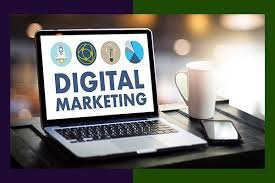Introduction:
In the digital world, small businesses are no longer given a choice, but necessity requires their online presence. How to learn digital marketing step by step case studies for small could reach out to more audiences and help increase brand awareness, thus generating sales. But what do I do first? Read on as this guide takes you through every step necessary for learning digital marketing alongside real-world case studies illustrating each of the concepts.
Define Your Goals and Objectives Clearly:

Define your objectives before diving into the world of digital marketing:
What are your requirements from digital marketing?
Let’s use an example of a small clothing e-commerce site named “Fashion Forward.” The final goal for Fashion Forward is to make more sales during the holiday season. To do that, it has set a few goals.
Increase traffic on the website by 20% in the next three months.Increase social media engagement by 50% through focused campaigns.
Increase sales by 15% through strategic email marketing.
The focus would be made on actionable results through a clear definition of goals and objectives by Fashion Forward.
Step 1: Understand Your Target Audience:
A proper foundation to create effective campaigns for digital marketing would be developed through the learning of the customers inside and out:
Who are these customers?
An example would be a health food store like “Green Bites” learning about the target group through market research that its target consists of 25 to 45 year old with healthy living.
To gain insight into the target audience, it allows Green Bites to hone its digital marketing efforts and to speak to that audience in ways that are speaking to the needs and interests of its target audience How to learn digital marketing step by step case studies for small
Step 2: Understand the Basics:
Before diving into the strategies and tactics, it’s first important to understand some of the fundamental concepts of digital marketing. These include the following areas to concentrate on:
Digital marketing is defined as different techniques adopted for the marketing of products or services online. Techniques adopted by digital marketing include search engine optimization, social media marketing, content marketing, and email marketing among many others.
This is where digital marketing levels the playing field, so to speak, in order for small businesses to compete with a larger firm. It gives them the potential to reach a wider audience or target a specific demography and measure the effect of marketing.
Define your objectives: Set your goals before starting a digital marketing campaign. Is this awareness, leads, or sales? A well-set objective will define your strategy and be your measuring stick to success.
Step 3: Setting Foundations:
A good foundation is the hallmark of successful digital marketing. For instance:
Design a Website: Your website is your business virtual store. So, it has to be user-friendly, responsive for mobile-friendly u

sers, and search engine-friendly.
Content Strategy: In virtual, content is the king. Hence, start creating excellent content which attracts those people belonging to your target segment. Blog posts, articles, videos, infographics, social media posts- all are included.
SEO Optimization: SEO will impact your website to rank higher in the search results, hence making organic traffic to your website. This calls for keyword research, on-page optimization, and link building.
Leverage Social Media: Social media is one of the most powerful tools to build a brand and reach your audience. Choose the right fit for your target audience’s preferred platforms and create consistency for a social media presence.
Step 4: Best Tactics Implementation:
Now it is the time to implement the right digital marketing tactics. These include:
Content Marketing: To create content that attracts and sustains a target audience to achieve their goals. These forms include blog posts, articles, videos, and infographics.
Email Marketing: The emailing of campaigns to your potential list in order to facilitate lead nurturing and conversion.
PPC Advertising: Use PPC advertising for your target audience through Google Ads and social media advertising.
Social Media Marketing: Use the social media platforms to reach your audience, share the stories that make up your brand, and drive traffic to your website.
Influencer Marketing: Use popular and industry-specific influencers to increase your reach and build credibility for your brands.
Step 5: Measure and Analyze:
Digital marketing is not a one time campaign activity. It has to be seen and developed in the constant process. Analytics tools shall be used in observing the relevant key metrics such as website traffic, conversion rates and ROI How to learn digital marketing step by step case studies for small .
Step 6: Content Marketing Strategy:
Content marketing will be the most effective mean of attracting and engaging your target audience, building brand awareness or driving conversions.
Example: fitness studio named “Fit Zone.” They produce a content marketing plan that entailed developing:
Blog posts as an information content about tips and trends
Videos of workouts, inspirational quotes
Email newsletters that come out regularly and may include promotional and discount offers. Becoming valuable and relevant with the content will allow Fit Zone to attract and retain highly defined audiences towards business performance.
Step 7: Paid Advertisement:
Paid advertising can be a very robust way to augment your digital marketing, build brand awareness and conversions.
Consider the e-commerce store “Eletro Shop”. This has run targeted Google ads and social media ads in keyword-based and demographics-based on the target group.
The paid advertisement would propel Electro Shop to greater exposure online, drive traffic onto the website, and to more sales.
Step 8: Analyze and Optimize:
To get the best results of digital marketing, he or she should track and analyze his or her results using tools like Google Analytics.
Now let’s assume that there is a travel agency called “Travel Trek.” Travel Trek uses Google Analytics to monitor website traffic, engagement metrics, and conversion rates.
From the above info, Travel Trek will pinpoint where it can improve and fine-tune its digital marketing efforts into better decision-making based on better data that yields to better results.
Q:What are the 7 C’s of Digital Marketing?

A:The 7 C’s of Digital Marketing model guides effective digital marketing strategies. These include;
Context: Understand the context with your target audience and their needs
Content: Developing quality content that reaches out to your audience.
Community: Building a solid online community of followers around your brand.
Communication: Your proper communication of the brand message.
Commerce: E-commerce transaction and sales
Customization: Tailor-made marketing according to the preference of each and every single individual.
Conversion: In terms of visits to your website, leads, and/or sales.
Conclusion:
It is very satisfying for small businesses. How to learn digital marketing step by step case studies for small these steps and case studies will help you navigate the digital landscape with sustainable growth. Digital marketing is a continuous process, so keep up-to-date on the latest trends and also be flexible according to the situation.





